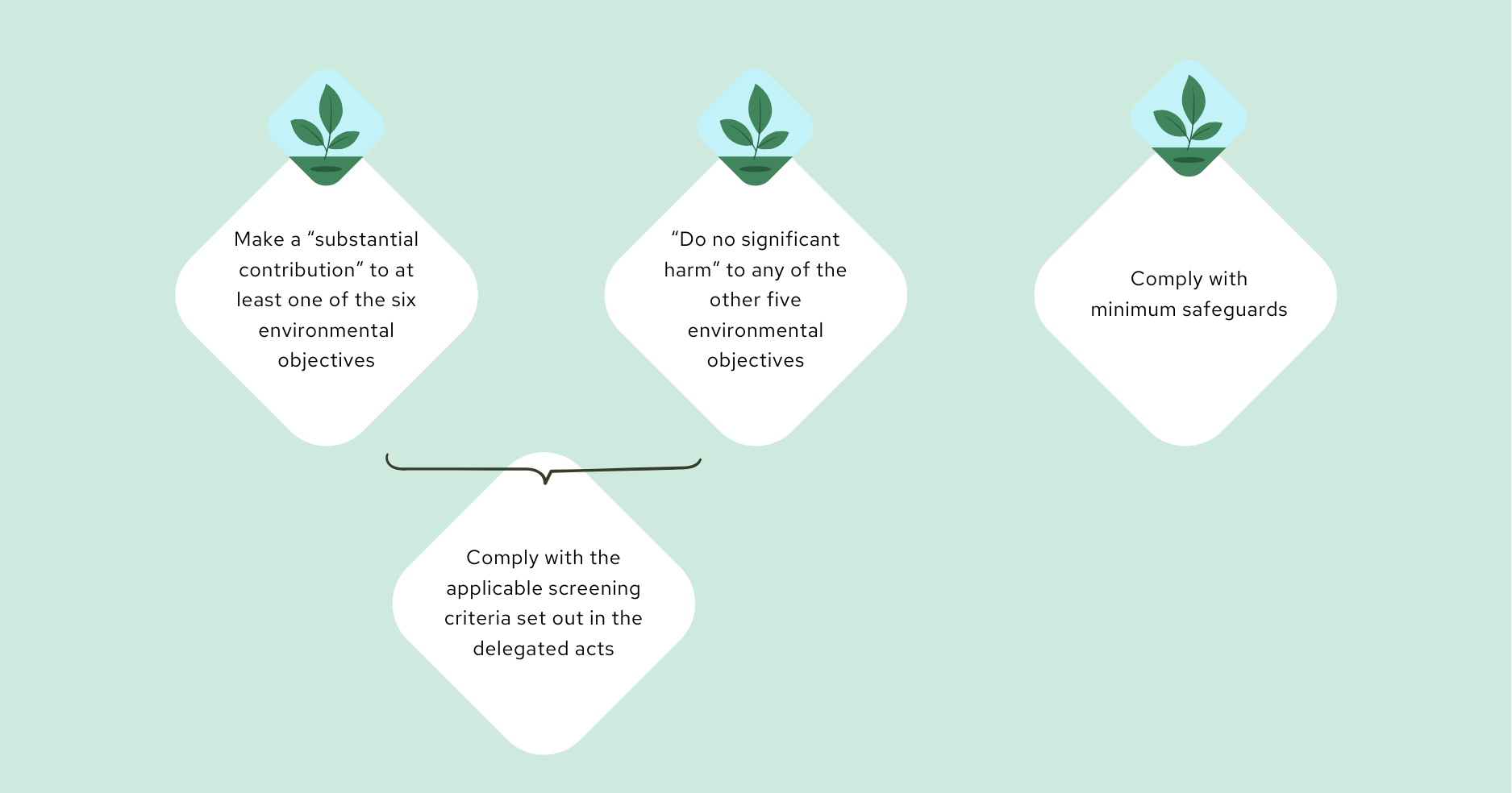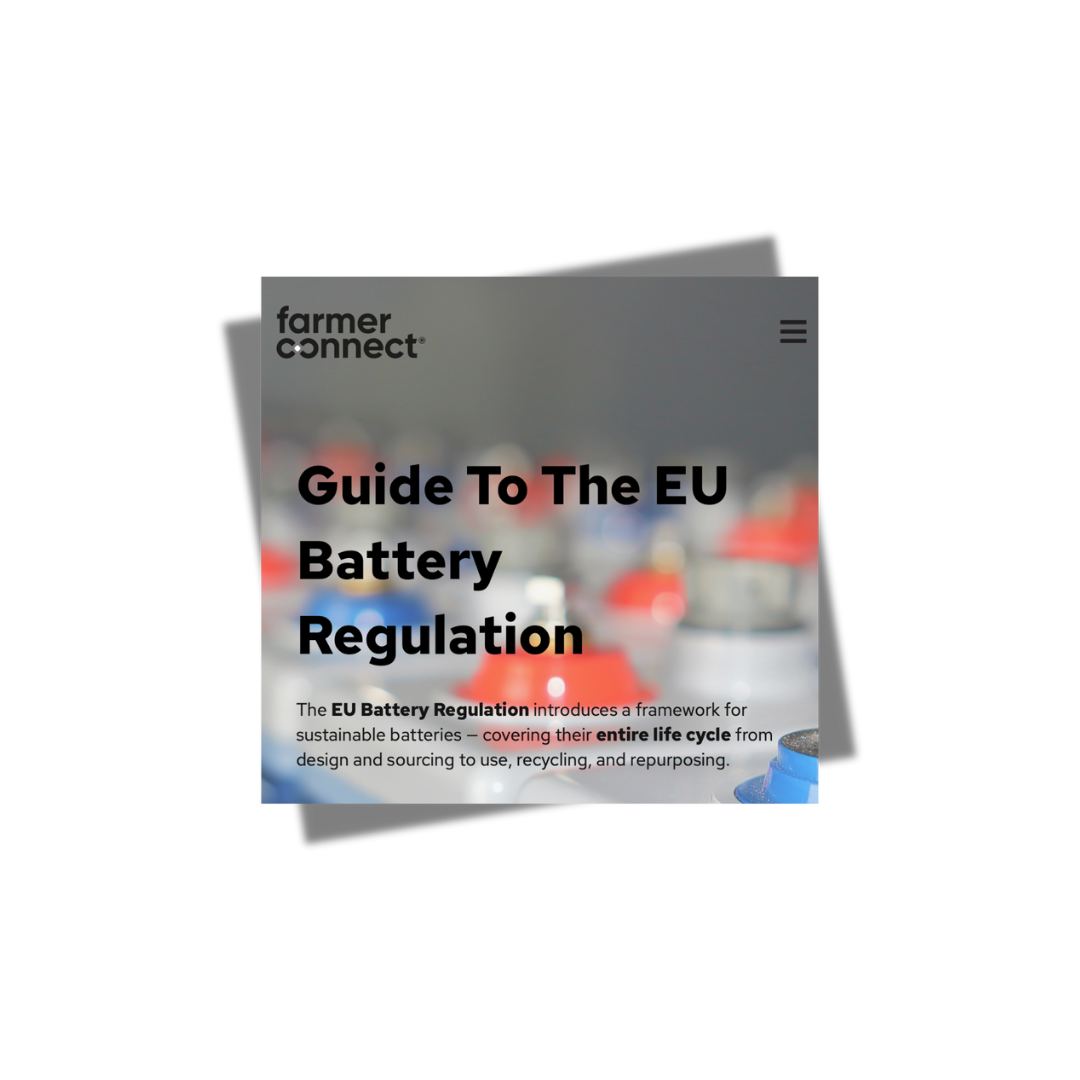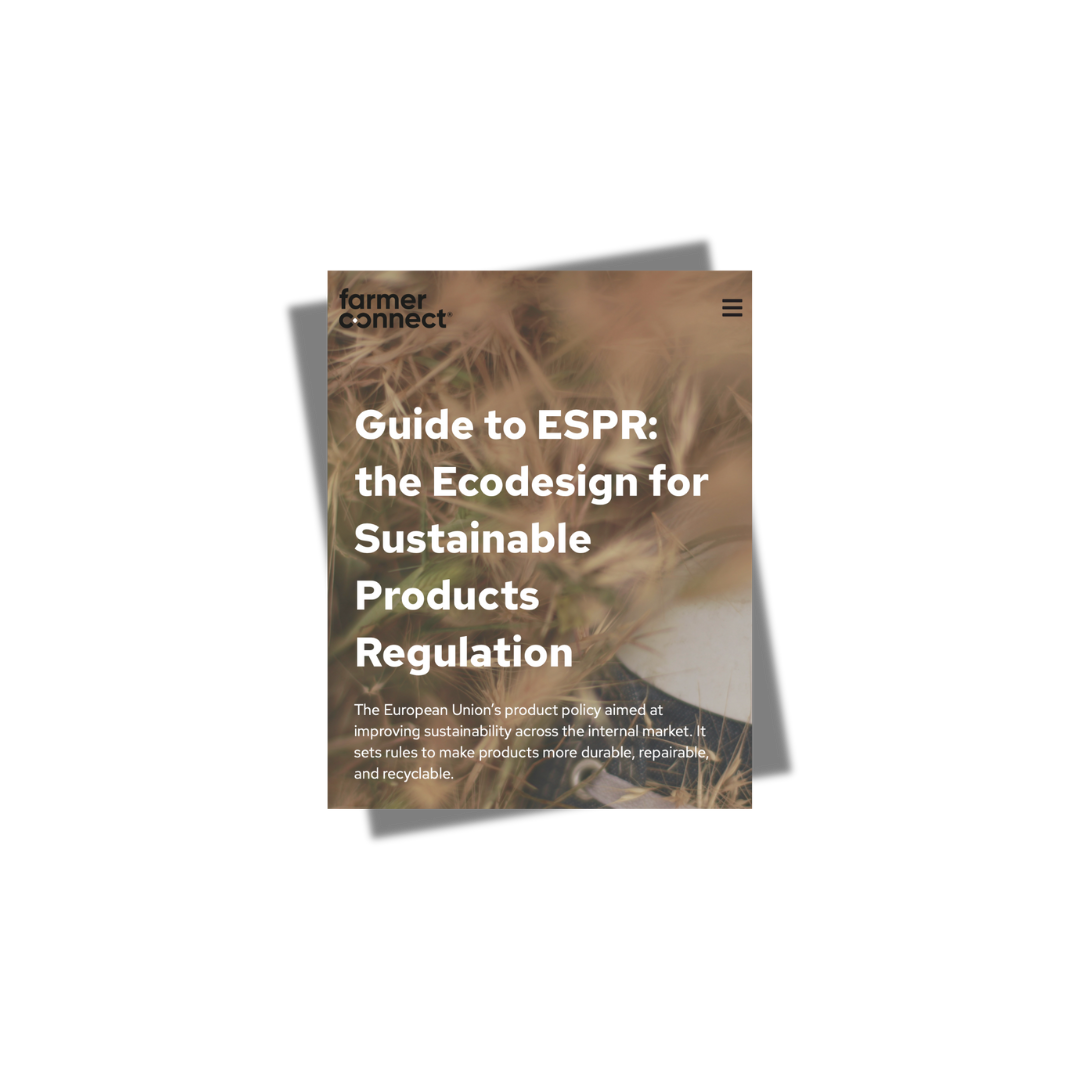If you haven’t already heard of the EU Deforestation Regulation (EUDR), then you can probably stop...
Guide To The EU Taxonomy Regulation
The EU Taxonomy defines what counts as sustainable in the EU — shaping the future of finance, compliance, and corporate responsibility. Learn how your business can align, disclose, and lead in the green transition.
Taxonomy Compliance ChecklistUnderstanding The EU Taxonomy Regulation
EU Taxonomy is the European Union’s flagship tool for driving capital toward environmentally sustainable investments. It sets clear criteria to define what counts as “green” — and ensures that companies, investors, and policymakers can speak the same language when it comes to sustainability.
If your business operates in the EU or seeks EU-based funding, the Taxonomy may already affect your reporting, financing, and investment decisions.
The EU Taxonomy is a science-based framework that defines which economic activities can be considered environmentally sustainable under EU law. It's a framework that
Helps investors identify green investments
Prevents greenwashing
Aligns private capital with the EU Green Deal and climate goals
The Key Criteria For Environmentally Sustainable Economic Activities

Who Does EU Taxonomy Apply To?
-
Large companies (under the Corporate Sustainability Reporting Directive / CSRD)
-
Financial market participants offering sustainable investment products
-
EU institutions (e.g., the European Investment Bank)
-
Non-EU companies marketing sustainable funds in the EU
If your company is in a covered sector, you must disclose your alignment with the Taxonomy.
What Activities Are Covered By The Regulation?
The Taxonomy includes over 100 activities across sectors like:
-
Energy
-
Manufacturing
-
Transport
-
Construction and real estate
-
Agriculture and forestry
-
Waste and water
-
ICT and R&D
The 6 Environmental Objectives
Climate change mitigation
Climate change adaptation
The sustainable use and protection of water and marine resources
The transition to a circular economy
Pollution prevention and control
The protection and restoration of biodiversity and ecosystems
EU Tentative Timeline

Why EU Taxonomy Matters ?
The EU Taxonomy is becoming a global benchmark for sustainable finance. It will affect:
Access to green finance
Investment attractiveness
Corporate reputation and transparency
Key EU Taxonomy Requirements
Check If Your Activities Are Covered
Use the EU's official activity list and screening criteria (official list of economic activities and their corresponding delegated acts defined under EU Taxonomy).
Assess Alignment
Determine if your activities meet the technical screening criteria and do no significant harm (DNSH).
Gather And Structure Your Data
% of Turnover from Taxonomy-eligible and Taxonomy-aligned activities
% of CapEx and OpEx contributing to those activities
Narrative explanations of:
How alignment was determined
Data sources and assumptions
How the "Do No Significant Harm" and "Minimum Safeguards" criteria were verified
Prepare Disclosures
Integrate Taxonomy alignment into sustainability and financial reporting (especially if CSRD applies)
Engage Your Supply Chain
Work with suppliers and partners to obtain reliable sustainability data.
The Farmer Connect Solution Benefits
Collect and manage sustainability data — from carbon footprint to human rights risk — in one traceable, structured system.
Quickly identify and tag operations that fall under Taxonomy-eligible sectors (e.g., agriculture, manufacturing, transport), setting the stage for compliance and reporting.
Support “Do No Significant Harm” (DNSH) assessments and minimum social safeguards by tracing supplier practices, origins, and risk flags throughout the chain.
Feed aligned KPIs (% turnover, CapEx, OpEx) into reporting with confidence, using structured, verified datasets drawn directly from your operations and partners.

📘 Download Your EU Taxonomy Checklist
Our Other Guides
Get In Touch
farmer connect is a tech solution that helps companies streamline their compliance and reporting requirements. Through integration and automation, we can ensure error proof and fast data centralisation and the automated generation of reports according to reporting standards.
Relevant News

The Gateway To Compliance Heaven: Gateway Check

The combined platform supports agribusinesses in meeting EU Deforestation Regulation (EUDR) and...


